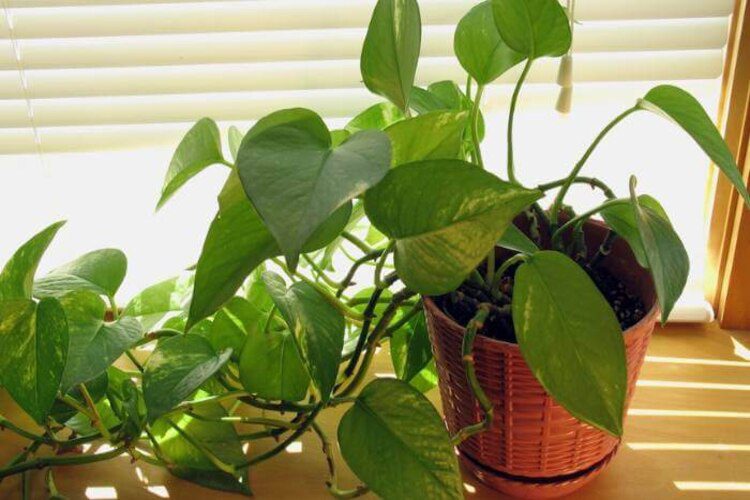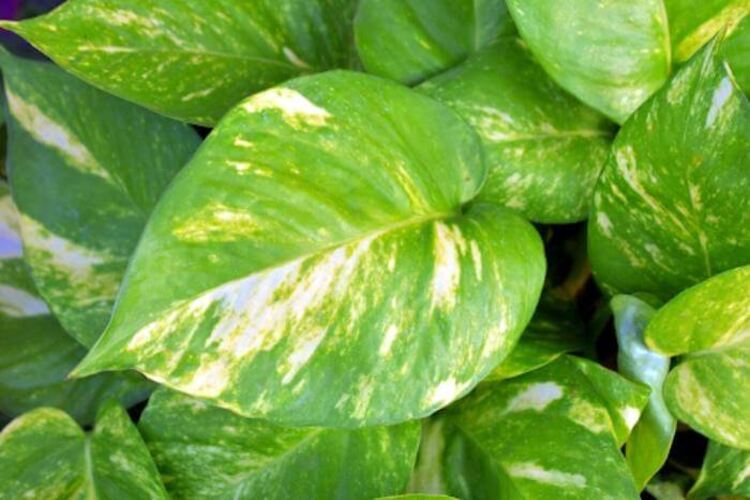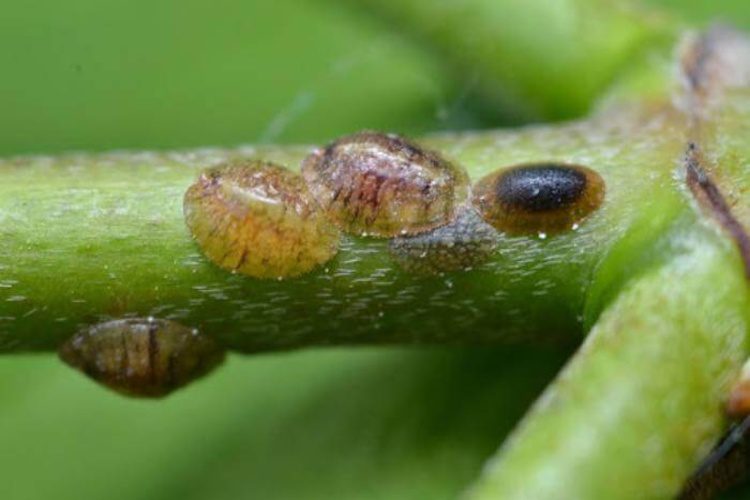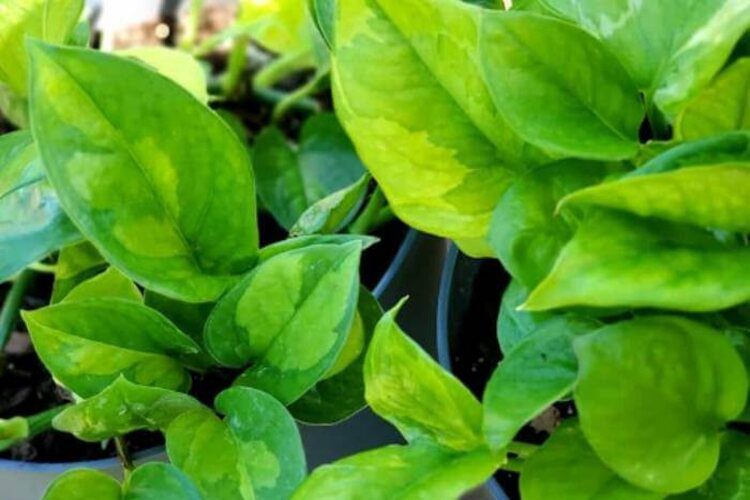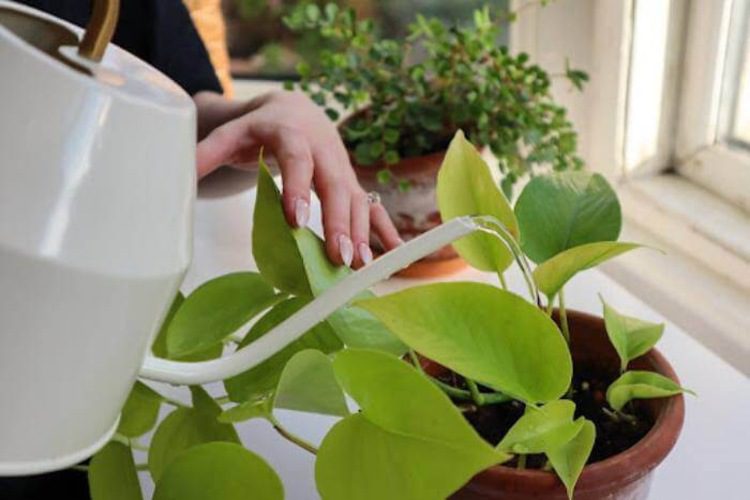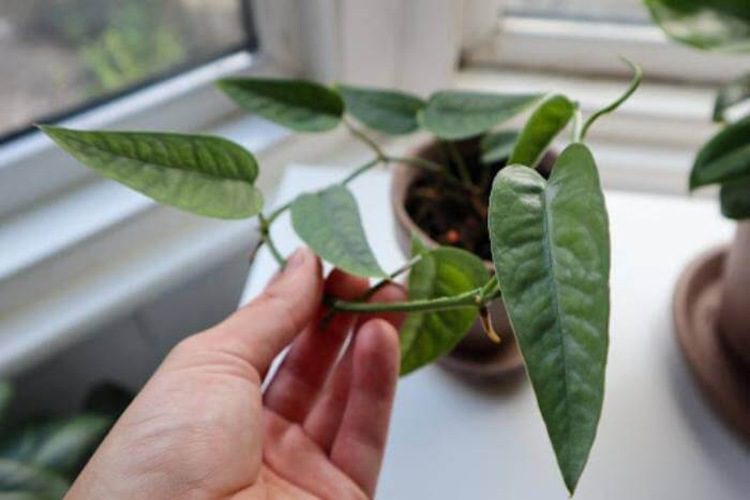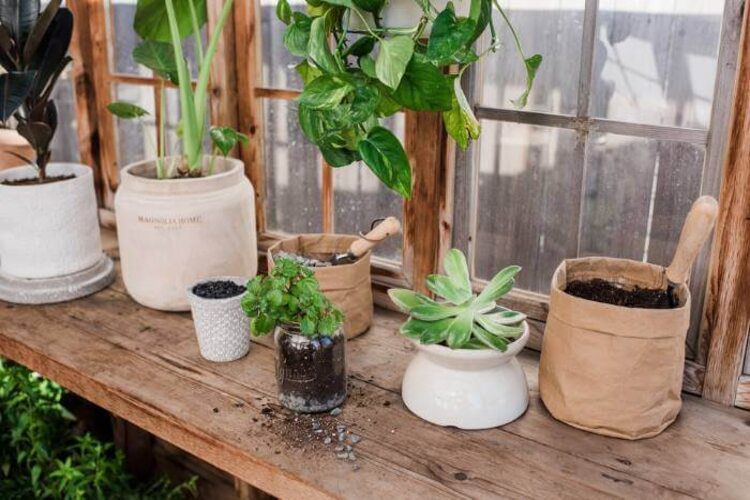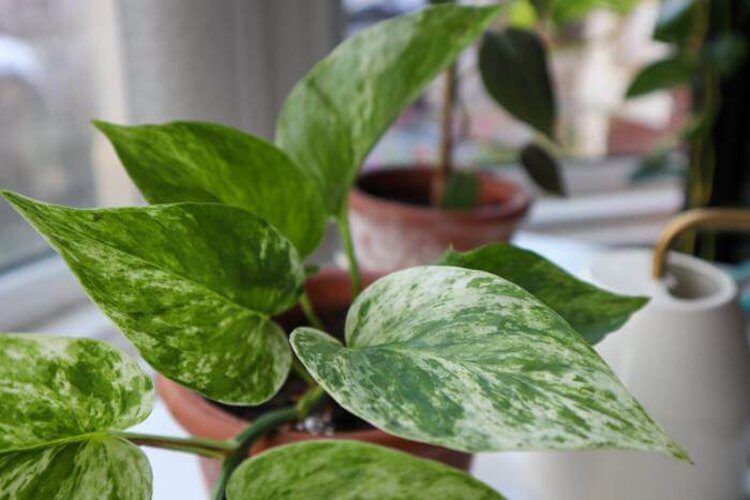Can Pothos Live Outside? Answer & Conditions To Live
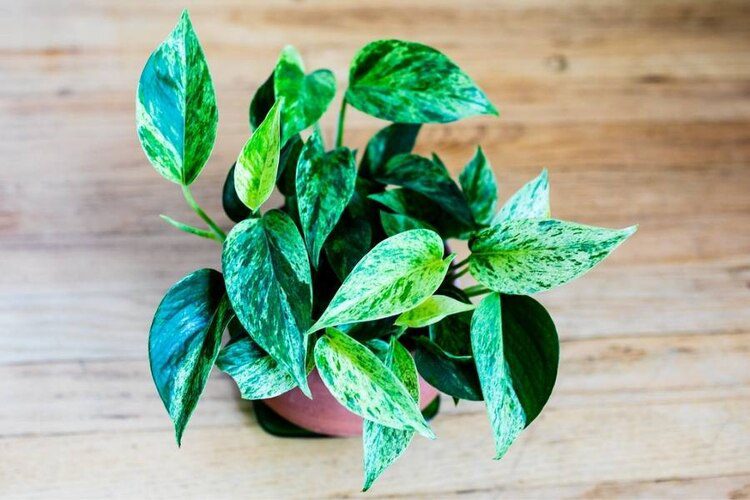
Everyone knows that Pothos is a popular kind of hanging houseplant. But you may ask, “Can pothos live outside?” The good news is that you can relocate this plant into your yard since it can live outdoors. But you’ll still have to think about the ideal temperature for them!
That seems like a simple job. Let’s consider how, when, and where you can cultivate it outside!
Can Pothos Live Outside?
Yes. Pothos can live outside in the USDA zones between zones 10 and 12. If you live in a warm place, you can grow Pothos outdoors. When temperatures are below 50°F, you should bring it indoors.
What Does It Need To Live?
As you know, this plant is a low-maintenance creature. Make sure it receives the following when you move it out:
- Adequate illumination
The Pothos plant prefers indirect light. Therefore, you should place it somewhere to receive adequate filtered sunlight, such as between many other plants or under other trees. If the houseplant does not receive enough light, it will impact its development. Additionally, under low light, multicoloured ones will lose their colors.
However, you must be cautious when mentioning light exposure because too much light can harm the plant. If you see any blanching in the leaflets, it proves that the plant is receiving too much direct sunlight.
- Well-drained soil
The Pothos plant is not particularly pH-selective, which is a plus. However, it is intolerant of subpar potting mixtures. Make sure the soil has enough drainage so the plant can flourish. Also, if you grow it outside, ensure you have changed the soil for adequate drainage.
- Appropriate watering
The watering frequency for the potted plant should be determined by checking the soil moisture level. As a typical rule, you should wait until the soil is fully dry before watering it again. Otherwise, root rot may occur. As a result, zone out your watering. If in doubt, buy a moisture gauge to use when needed. You can avoid overwatering the Pothos, which can hurt it.
- Elevated temperatures
Always target temperatures that are higher than 50 °F. The average temperature for outdoor Pothos plants would be significantly higher, around 70 °F. It is a tropical tree. Therefore, it will adapt well to these circumstances.
- High humidity
Humidity is not a big problem. This houseplant will endure well even if it is too low. However, if the moisture is high, it will perform better.
- Regular fertilization
Given how frequently this plant eats, it’s necessary to add fertilizer to its potting soil at least once per month. To choose the best options, look at which plant fertilizers grow quickly.
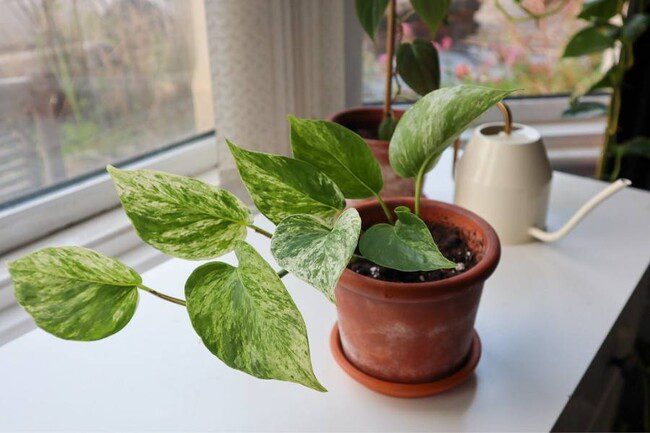
Where Can You Grow Outdoor Pothos Plants?
To ensure your plant grows well, you must learn where it can thrive. Outdoor pothos thrive in a location away from direct sunlight. Grow it on a patio, a porch, or under the shadow of other ornamental shrubs that give it dappled light.
Can Pothos Be Outside In The Winter?
In general, Pothos plants thrive in areas with temperatures between 60°F and 85°F. The plant may get shocked if temperatures drop below 50°F. Regrettably, it might not endure the damage brought on by such a drop in temperature.
Don’t try to keep the plant out in the wintertime if there may be a risk that the temperature drops below 50°F. Instead, bring it inside and hang on until spring, or use a frost blanket to protect it from the freezing temperature.
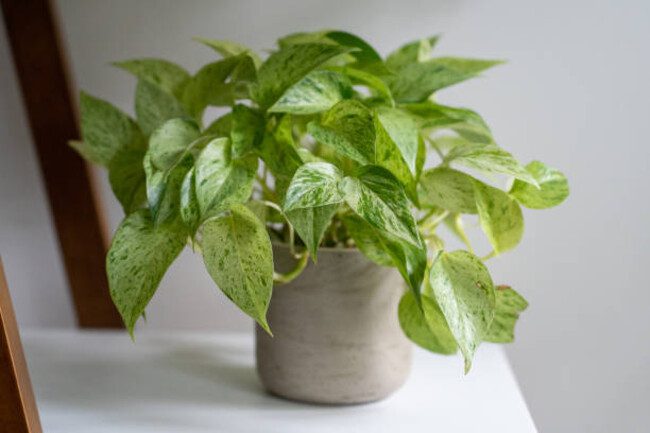
How To Care For Outdoor Pothos
- Watering
The most crucial step in cultivating outdoor Pothos is watering. If you own a pot, ensure you water it frequently or set it on a shallow dish filled with liquid that will flow away when needed. The soil should always be moist. You might invest in an automated drip system or install a hose timer if your pots are outside and not close to any moisture. Also, learn what happens if you don’t water after fertilizing. Your plant will not thrive if you do the wrong things.
- Range of temperatures
The ideal temperature range for this plant is between 40 and 90 °F. The warmth of the summer won’t harm Pothos plants because they can withstand a wide variety of temperature changes. However, they cannot tolerate low temperatures. If it is too cold or hot, transfer them indoors to a shadier area.
- Sunlight
Pothos plants may thrive in full sun or some shade and are hardy. But you should consider the high level of the sun because the plant may burn quickly if the light is too strong. Not to mention, direct sunlight is not recommended since it may cause leaf burn. If you grow Pothos outdoors beneath the ground cover, ensure there is enough sunlight for the greenery to obtain a tan.
- Humidity
Since Pothos are tropical natives, they do well at higher humidity levels. Consider installing moisture-inducing equipment or a humidifier if you’re planting your plant outdoors and discover that it’s drying enough inside all year for sweater weather.
- Fertilizer
Pothos don’t need much fertilizer, but you need to feed them with organic materials or compost every 35 days. Figure out a good compost ratio to make DIY fertilizer. Before watering again, the owner should irrigate the soil with fertilizer and give it some time to absorb it.
- Pruning
You must routinely lop your Pothos plant to keep it in shape by cutting its bottom leaves when they grow to a length of 5 inches. You can repeat this action in all seasons. But, you also need to guarantee there are no symptoms of frost before venturing outside!
- Diseases and pests
Pests and diseases rarely cause problems for houseplants. The only factor to notice is a scale insect infestation. You can quickly treat it by giving the leaves a light scrub under running tap water.
Benefits and Drawbacks
Tropical jungles are where plants flourish. So, you may anticipate that growing a golden one outdoors would have certain advantages. However, keeping it outdoors has drawbacks as well.
Natural Light
Indoor lighting conditions are seldom comparable to outside natural light. The Pothos will flourish when cultivated outside in light circumstances that match its needs since it enjoys bright, indirect light.
Better Growth
Faster and healthier growth will result from improved lighting conditions. Your potted Pothos should produce lusher, more giant leaves. Moving the plant outside will cause its leaves and stems to develop more quickly and healthily. In the wild, the Pothos may reach a height of 40 feet!
Less Contact With Chemicals
What do you use to feed your indoor plant? Like most people, you water your Pothos using tap water. Though this water is okay for you, it harms the plant. Fluoride and chlorine are two common pollutants found in tap water. They accumulate in the soil over time and injure the plant. It will develop well if the plant obtains clean, unfiltered rainfall outside.
Nutrient-Rich Soil
You will fertilize your Pothos regularly. But all those nutrients eventually run out, and the development surge slows. Yes, they do. It can take in all the nutrients it needs in the wild. Naturally, this is true for the one cultivated outdoors rather than in containers.
Damage Due To Temperature
You can often control the temperature your Pothos is exposed to inside. On the other hand, your plants do not influence the weather outdoors.
As a result, there is a danger that the temperatures may drop and harm your family if you reside outside of hardiness zones 10 through 12. It’s considerably simpler to regulate the temperature and avoid such variations inside. It is also more straightforward to control other environmental factors, such as humidity, light exposure, etc.
Pests
Although pests may also harm plants inside, infestations outside are considerably more probable. A similar infestation is also considerably more challenging to see in the wild. It may have spread too far when it eventually became clear.

Conclusion
In conclusion, you can grow Pothos plants outdoors. You can also grow it outside during the warm months in some shade. Since their vines are almost unbreakable, you shouldn’t have to worry too much about their survival. However, it would help if you considered how invasive and harmful they are. So, it is important to weigh out their advantages against their drawbacks to find the most appropriate houseplants for your home!
Related post:


